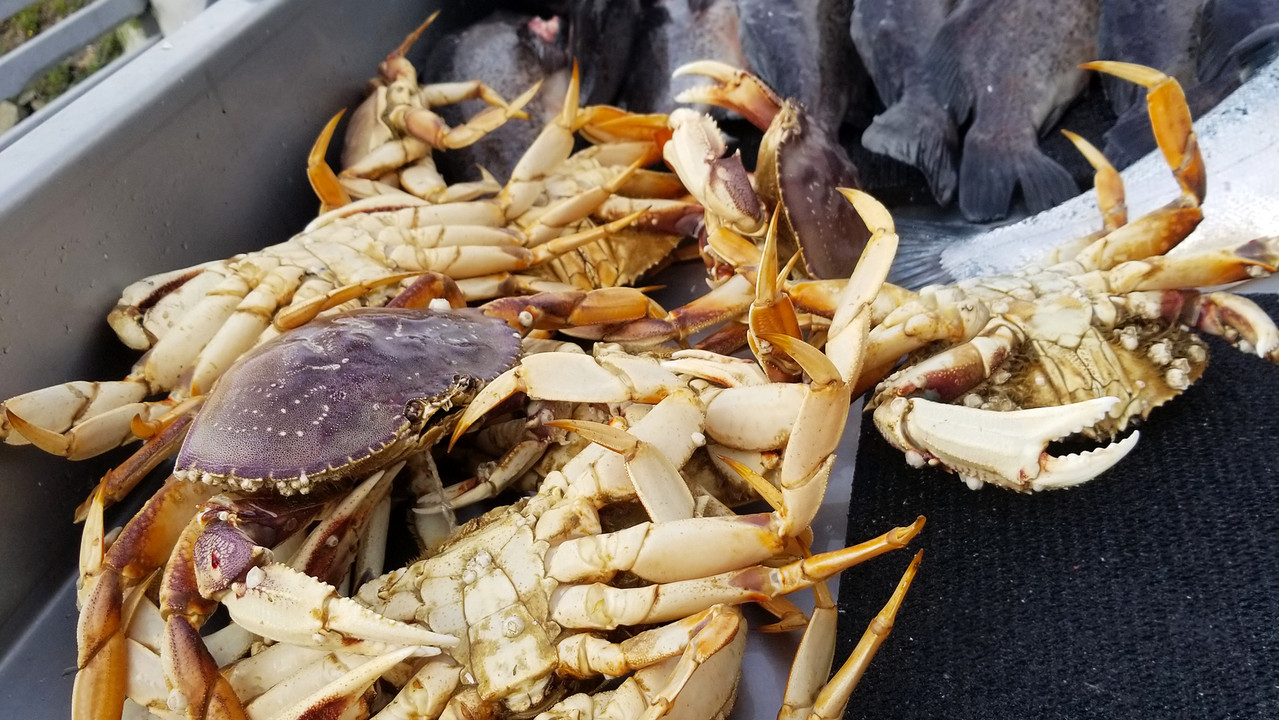Harvesting Crab with Casting Traps
Dungeness crab is a species of crab inhabiting eelgrass beds and water bottoms along the west coast of North America. They can easily be caught by casting crab traps. Casting a crab trap typically refers to the process of throwing a crab trap into the water. Crab traps are widely used by both recreational and commercial crabbers to harvest crabs from various bodies of water, like Dungeness crab in the Pacific ocean.
Harvesting Dungeness Crab with Casting Traps:
1. Select a suitable location: Choose an area where crabs are likely to be present, such as near rocky areas, piers, jetty, sandy beach, or marshy regions.
2. Bait the trap: Place bait inside the crab trap to attract crabs. Popular baits include fish heads, chicken legs, or other seafood scraps. The scent of the bait lures crabs into the trap.
3. Prepare the trap: Ensure the trap is securely closed before casting. Some traps may require you to tie or secure the doors to prevent them from opening prematurely.
4. Position yourself: Stand near the edge of the water, ensuring you have enough space to cast the trap without obstacles. Maintain a firm grip on the trap to prevent it from slipping or falling.
5. Cast the trap: With a swift motion, swing your arm forward and release the trap into the water. Aim for an area close to where you expect crabs to be. If you're using a weighted trap, you can achieve a longer cast by swinging your arm with more force. Certain styles of the casting crab traps can be casted with fishing poles.
6. Anchor the trap (optional): If needed, attach a line or rope to the trap and secure it to a stationary object like a dock or a weight to prevent it from drifting away with the current.
7. Wait and retrieve: Allow the trap to sit in the water for a period of time, typically around 15-30 minutes. During this time, crabs will be attracted to the bait and enter the trap. After the waiting period, carefully retrieve the trap by pulling it out of the water, ensuring not to lose any captured crabs.
8. Fishing Line: For a spinning setup, use 65-80LB Braid main line. For a casting setup, use open face star drag reels with 35-40LB mono line.
Remember to check local regulations regarding crabbing, such as minimum size limits, catch limits, and any seasonal restrictions. It's also important to handle crabs with care, as they can have sharp claws and may pinch if handled improperly.
Find All Our Crabbing Equipment Here.
EXPLORE POPULAR ARTICLES
-
Crabbing in the Pacific Northwest
Nov 11th 2024Crabbing in the Pacific NorthwestThe Pacific Northwest (PNW) is a region known for its stunning land
-
Salmon Fishing in the Pacific Northwest: A Guide to the Best Angling Experience with Fish-Field
Nov 7th 2024The Pacific Northwest (PNW) is known for its stunning landscapes, rich natural resources, and, of co



